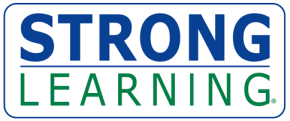How To Teach Vowels
Dear Dr. Linda,
I’m in my second year of teaching, and I teach the second grade. Teaching vowels is one of the most challenging parts of my job. I’ve had many courses on the history of education and educational theories, but I never had a course simply on how to teach vowels. My Master’s degree is in teaching math, so that’s not helping. I don’t think I ever had a course on any of this. What do you recommend I do?
Elissa
—
Dear Elissa,
I’m going to give you a quick course on vowels. Hopefully, this will help you get started. Then, go online and find a more detailed book on vowels.
Vowels in a Nutshell
- Every word in the English language is made up of the 26 letters in the alphabet. 21 of the 26 letters are called consonants. The five (5) letters, a, e, i, o, u, are called vowels. Sometimes, Y and rarely W act as vowels.
- Every word and every syllable, in the English language, must have at least one vowel.
- The vowels’ sounds depend on where they appear in letter patterns. Sometimes vowels make a short sound, a long sound, and sometimes a different sound.
- Short vowels are usually followed by consonants which shorten their sound. For example, cat, egg, pig, hot, nut.
- The sound of short vowels are as they sound in the above words.
- Consonant-Vowel-Consonant (CVC) pattern is the most common pattern. It is formed when a vowel appears between two consonants.
- Vowel-Consonant-E Pattern (VCE) is a common pattern in which a vowel is followed by a consonant and consonant is followed by a final e. In this pattern, the vowel sound is long (it sounds like its name) and the e is silent. For example, cake, Pete, time, hope, cube.
- Vowel digraphs are two vowels together. The first vowel is long and the second is silent. This jingle is often used to remember the rule. “When two vowels go walking, the first one does the talking.”
- In R-Controlled vowels, the vowel is followed by an “r” and the sound of the vowel is changed. For example, car, flower, bird, corn, turtle.
- Diphthong patterns is when two vowels blend together to form a totally new single sound. For example, “oi” as in coin, “oy” as in boy, “oo” as in goose, “aw” as in aw/ful, “ew” as in chew.
- The letters “y” and “w” are usually consonants, but sometimes they act as vowels. For example, by, hap/py, myth, claw.
Hope this gets you started,
Dr. Linda
